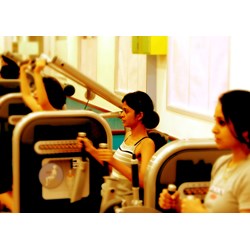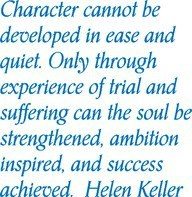Evaluating for Proper Fitness
Assess your physical abilities. Before beginning exercise it is important to understand exactly how fit you are.
Weight and Vitals
You will need to step on a scale and see how much you weigh, like it or not. Your blood pressure, cholesterol level, and triglycerides are important. All of these provide insight of where you are and where you need to go.
BMI
Your BMI number means your body mass index. It relates to your body composition. Determine your current BMI number is, write it down and post it in a conspicuous place.
Targeted Heart Rate
You first need to determine exactly what your resting heart rate is, which can be performed by locating your pulse on the wrist, or neck, and taking the count for 15 seconds. Next, take this number and multiply it by four to determine your actual heart rate per minute. Take number 220 and subtract your age to determine your maximum heart rate. Then take the maximum heart rate and multiply it by 60% and then by 85%. Those two numbers are the range of your targeted heart rate. You want to stay within it when working out.
Aerobic Fitness
Test your aerobic fitness. Simply walk one mile while recording your heart rate during the middle of the walk. Track the length of time it takes and record the results.
Muscular Fitness
Determine how fit your muscles are by evaluating how many pull ups and push-ups can be accomplished at a time. Both numbers will indicate exactly how fit your muscles are.
Journal
Keep a fitness journal to test and retest yourself throughout your physical program. You can stay better motivated when you see your fitness is moving forward.

Play
Playing with your kids or grand-kids is fun and vigorous play calories and keeps you fit. Then there is the benefit of strengthening ties. <br />No pain, no gain is an old-fashioned theory of exercise that injured a lot of people during the 1980s and 90s. Fitness be fun and challenging and should never hurt. When you exercise you should be able to talk, laugh and feel good or you are doing it wrong. Dial it back a little to a point where you are comfortably challenged but not hurting. Sports are a good way to play (exercise). Exercise doesn’t have to be work! It should be fun!

Exercise is Movement
Most people think just a little bit of exercise is a big waste of time. The theory is that you have to exercise at least half an hour every-other day to get benefits. This is B.S. Anything you add to your activity will make some difference in your health and fitness. For example, choosing to take the stairs instead of the elevator will not give you 6-pack abs but it could reduce your blood pressure and improve your overall cardiovascular health. So get up off that couch and Exercise! It’ll do a body good.<br />It is never too late! Every hour you spend exercising may mean two more hours of life! Even at middle aged or elderly, exercising will help you keep your energy levels up, improve flexibility keep you mobility and improve muscle tone. Any exercise be it walking, stretching, even slow dancing will improve your health. Lifting weights is a great way to keep your body young. We start to lose lean muscle and bone density after the age of thirty. Weight-bearing exercise helps combat the loss. Using light hand weights while watching TV or going for a stroll can help keep your skeleton strong.<br /><br /><br />




